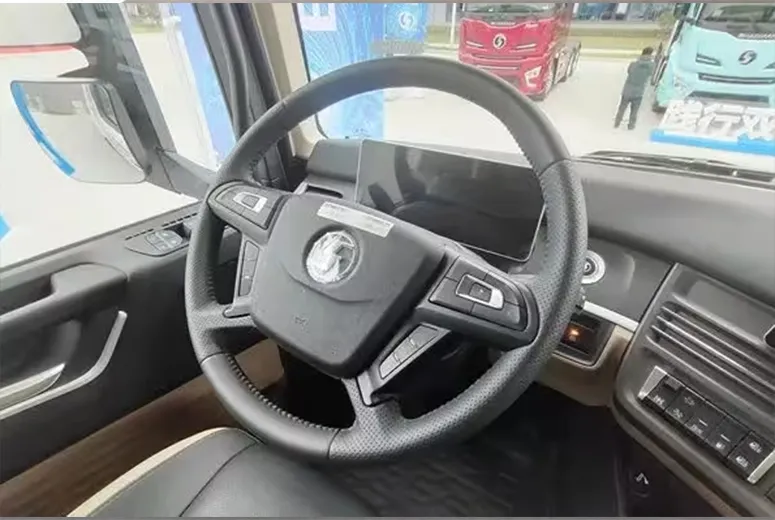transmission speed sensor replacement
Understanding Transmission Speed Sensor Replacement
The transmission speed sensor plays a vital role in the performance and efficiency of a vehicle's transmission system. This component provides data related to wheel speed or transmission input and output speeds to the vehicle’s engine control unit (ECU). The ECU uses this information to optimize shifting patterns, maintaining engine performance and fuel efficiency. If you're facing issues with your vehicle’s speed sensor, understanding the signs that indicate the need for replacement, the replacement process, and the implications of ignoring sensor failure can be immensely beneficial.
Signs of a Failing Transmission Speed Sensor
Several symptoms may indicate that your transmission speed sensor requires replacement. One of the most notable signs is erratic or malfunctioning speedometer readings. If the speedometer fluctuates without any clear reason or fails to register speed altogether, this could lead to inaccurate speed readings and unsafe driving conditions.
Another symptom is the illumination of the check engine light on your dashboard. This could be associated with transmission issues, including sensor malfunction. Additionally, if you notice rough or erratic shifting while driving, it can indicate that the transmission is not receiving accurate speed data. These issues often compound over time, leading to more significant transmission problems if left unchecked.
The Replacement Process
Replacing a transmission speed sensor may vary in complexity depending on the make and model of your vehicle. However, the general steps involved are quite similar. First and foremost, it is crucial to gather the necessary tools and find a safe, well-lit workspace. You will typically need a jack, jack stands, and basic hand tools, such as wrenches and screwdrivers.
1. Disconnect the Battery Safety should always come first. Disconnect the negative terminal of the battery to prevent any electrical mishaps while working on your vehicle.
2. Locate the Sensor The speed sensor is usually located on the transmission case. Refer to your vehicle's manual to find the precise location.
transmission speed sensor replacement

3. Remove the Old Sensor Once located, unplug the electrical connection and then unscrew the mounting bolt(s). Carefully extract the old speed sensor from its housing.
4. Install the New Sensor Place the new sensor into the housing and secure it with the mounting bolts. Reconnect the electrical wiring to ensure proper communication with the engine control unit.
5. Reconnect the Battery Finally, reconnect the negative battery terminal, start the car, and check for proper operation of the speedometer and any associated dashboard indicators.
The Consequences of Ignoring Replacement
Neglecting a faulty transmission speed sensor may lead to more severe complications, including poor transmission performance, decreased fuel efficiency, or even catastrophic transmission failure. When the ECU does not receive accurate information from the speed sensor, it may shift rudderlessly, causing undue stress on the transmission components.
Additionally, running your vehicle with a malfunctioning speed sensor can also lead to increased wear and tear on other critical components. Most notably, this can include the torque converter and clutches, which are vital for smooth shifting. In extreme cases, it can even result in a complete transmission breakdown, leading to costly repairs.
Conclusion
In summary, the transmission speed sensor is a crucial component that directly affects your vehicle's performance and safety. If you notice any signs of failure, timely replacement is essential to maintain efficiency and avoid extensive damage. While the replacement process can typically be managed with a bit of mechanical knowledge, professional assistance is also an option for those who are not comfortable with automotive repair. Keeping an eye on your vehicle’s performance and addressing issues promptly can help you avoid more significant problems down the road.
-
2BFY Traction Series Grain Fertilizer Seeder-Chenyang Group|Precision Farming,Agricultural MachineryNewsJul.30,2025
-
2BFY Traction Series Grain Fertilizer Seeder-Chenyang Group|Precision Farming SolutionsNewsJul.30,2025
-
2BFY Traction Series Grain Fertilizer Seeder-Chenyang Group:Integrated Seeding&FertilizingNewsJul.30,2025
-
2BFY Traction Series Grain Fertilizer Seeder - Chenyang Group|Integrated Seeding,FertilizingNewsJul.30,2025
-
2BFY Traction Series Grain Fertilizer Seeder-Chenyang Group|Integrated Seeding&FertilizingNewsJul.30,2025
-
Grain Fertilizer Seeder-Chenyang Group|Precision&EfficiencyNewsJul.30,2025
Popular products

























